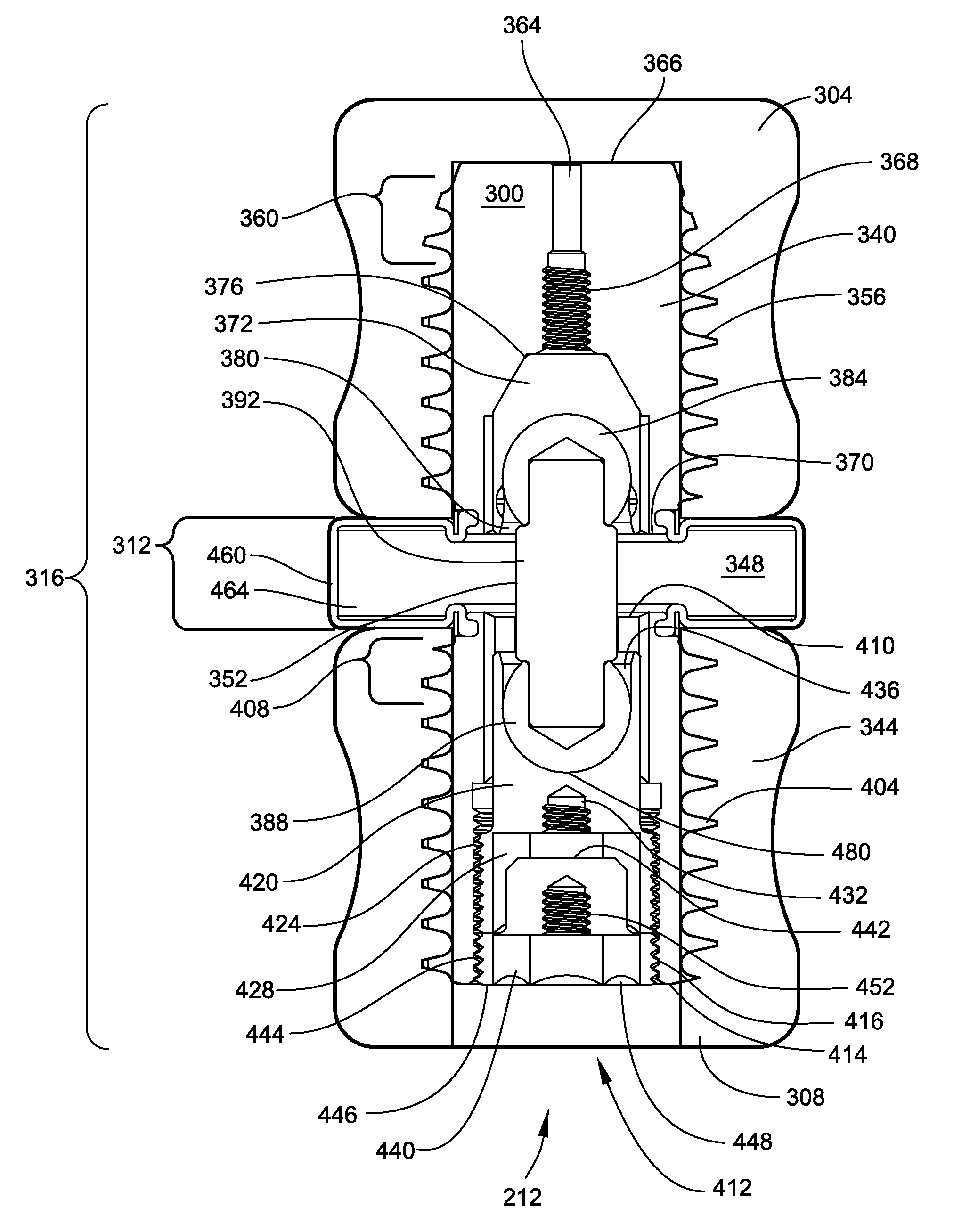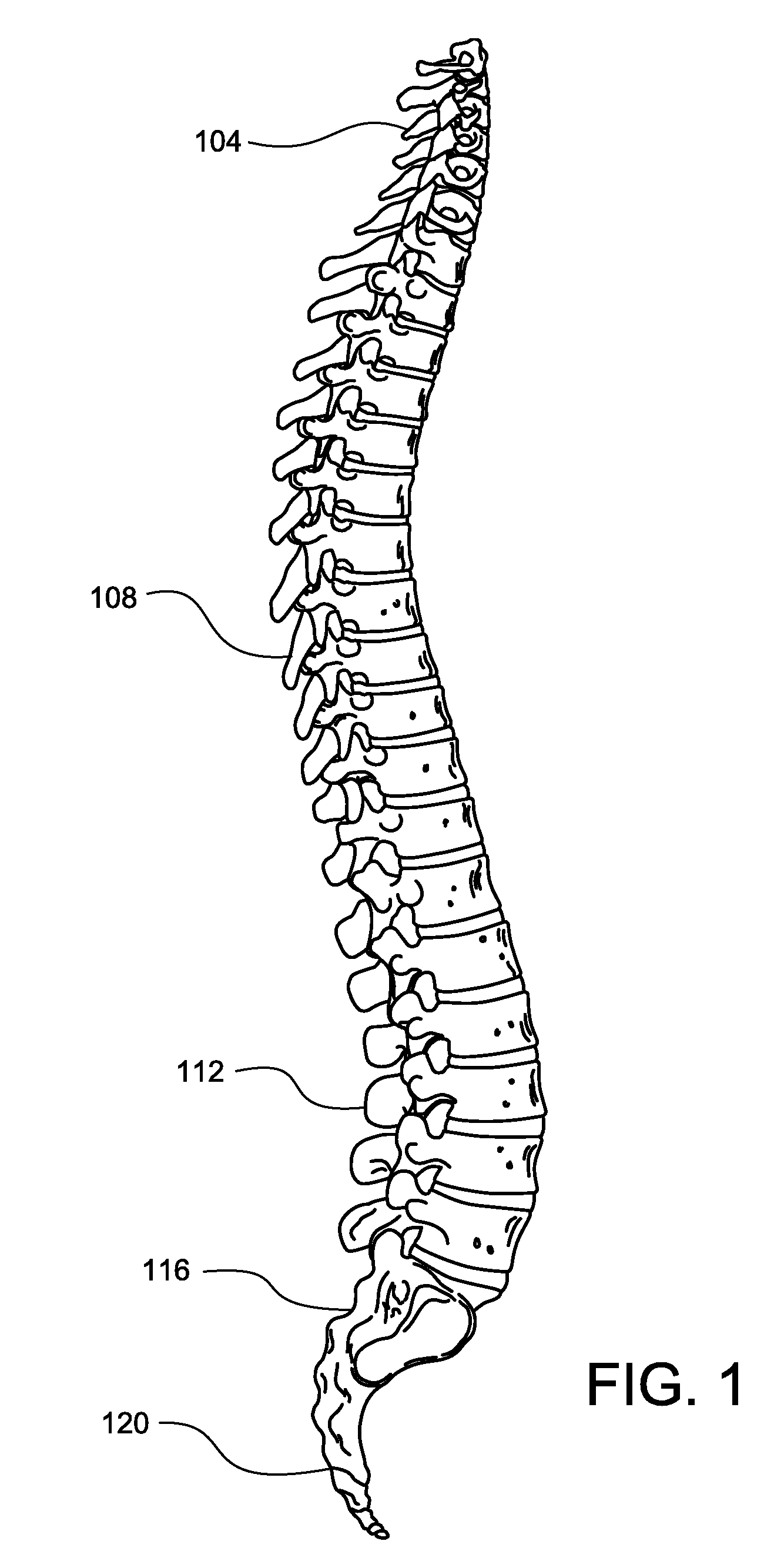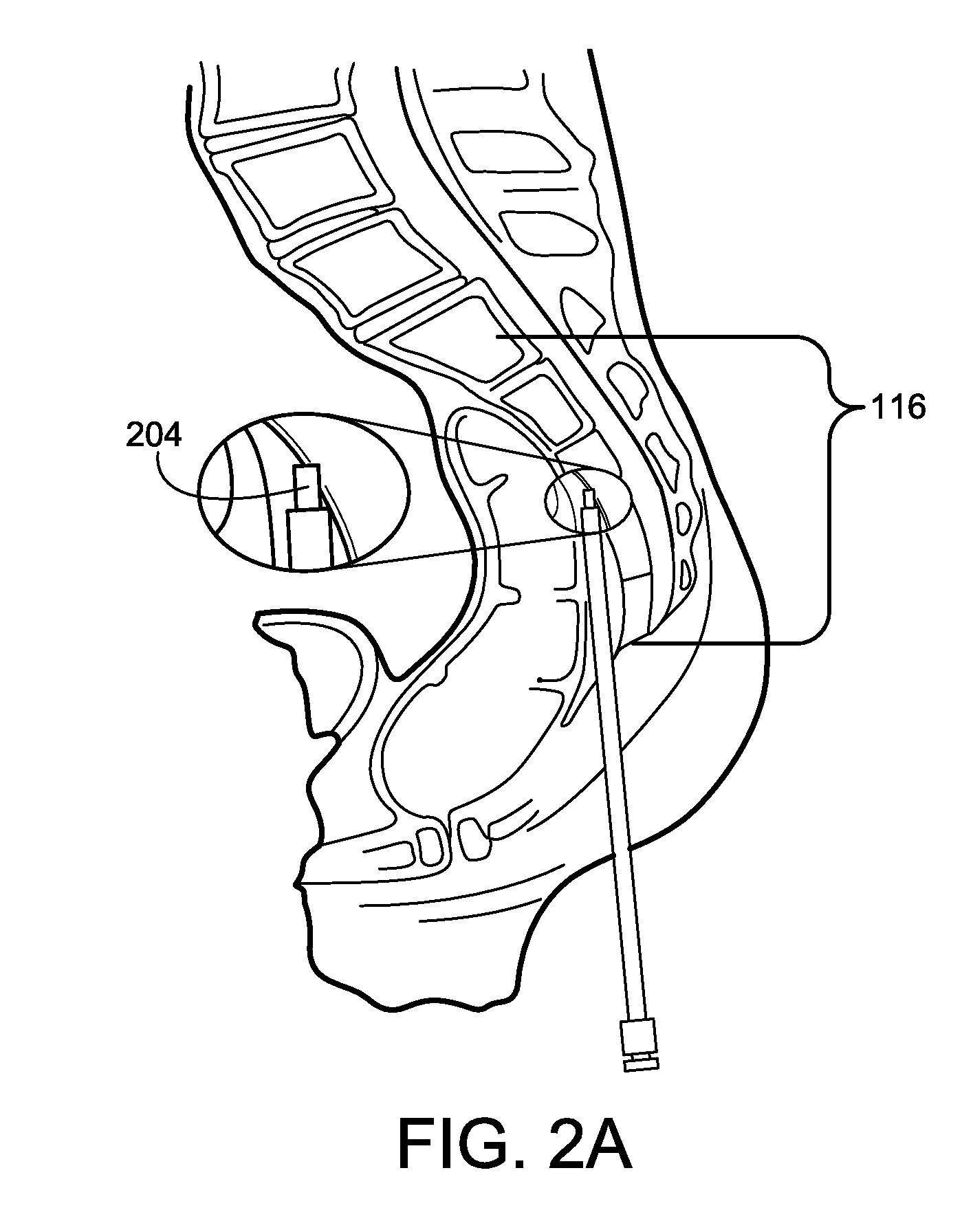Methods for Deploying Spinal Motion Preservation Assemblies
a technology of spinal column and assembly, which is applied in the field of spinal column assembly deployment, can solve the problems of reduced gap between adjacent vertebrae, pain, and one or more discs in the spinal column not working as intended, and achieves the physiological function of natural disc structures, preservation of translation, and improved weight bearing and load distribution
- Summary
- Abstract
- Description
- Claims
- Application Information
AI Technical Summary
Benefits of technology
Problems solved by technology
Method used
Image
Examples
first example
[0085]The present invention will now be described more fully hereinafter with reference to accompanying drawings in order to disclose selected illustrative embodiments. This invention may, however, be embodied in many different forms and should not be construed as limited to the embodiments set forth herein; rather these embodiments are provided so that the disclosure can be thorough and complete, and as part of the effort to convey the scope of the invention to those skilled in the art. Like numbers refer to like elements throughout.
[0086]In order to avoid the imprecision that can sometimes be introduced into a patent application while discussing many different alternative configurations at once, FIG. 3 starts with one very specific embodiment of the present invention. In order to provide an overview of the components and their placement with respect to a spinal motion segment, the explanation will start with an overview of an implanted device. Subsequent drawings will provide deta...
PUM
| Property | Measurement | Unit |
|---|---|---|
| aspect ratio | aaaaa | aaaaa |
| thickness | aaaaa | aaaaa |
| elongation | aaaaa | aaaaa |
Abstract
Description
Claims
Application Information
 Login to View More
Login to View More - R&D
- Intellectual Property
- Life Sciences
- Materials
- Tech Scout
- Unparalleled Data Quality
- Higher Quality Content
- 60% Fewer Hallucinations
Browse by: Latest US Patents, China's latest patents, Technical Efficacy Thesaurus, Application Domain, Technology Topic, Popular Technical Reports.
© 2025 PatSnap. All rights reserved.Legal|Privacy policy|Modern Slavery Act Transparency Statement|Sitemap|About US| Contact US: help@patsnap.com



